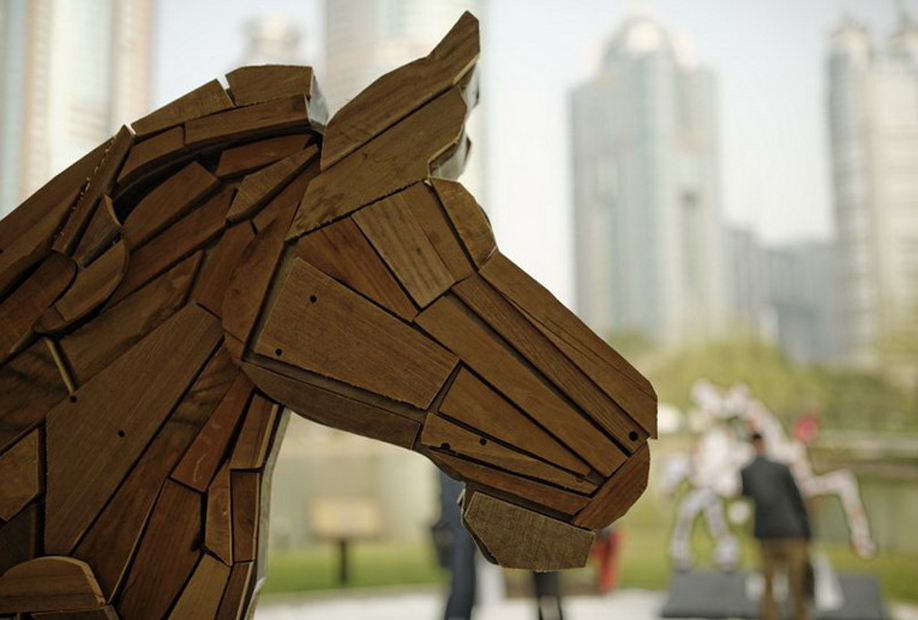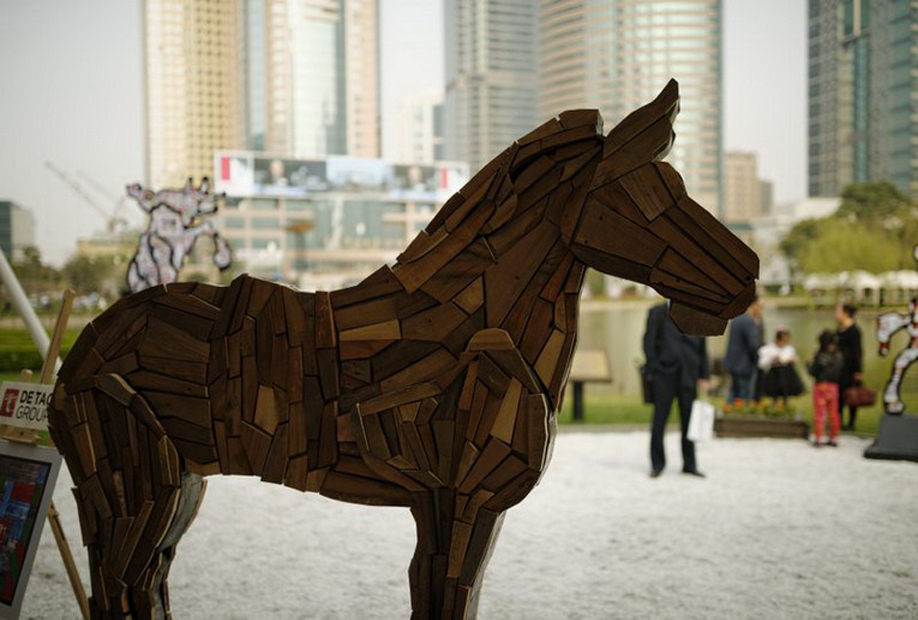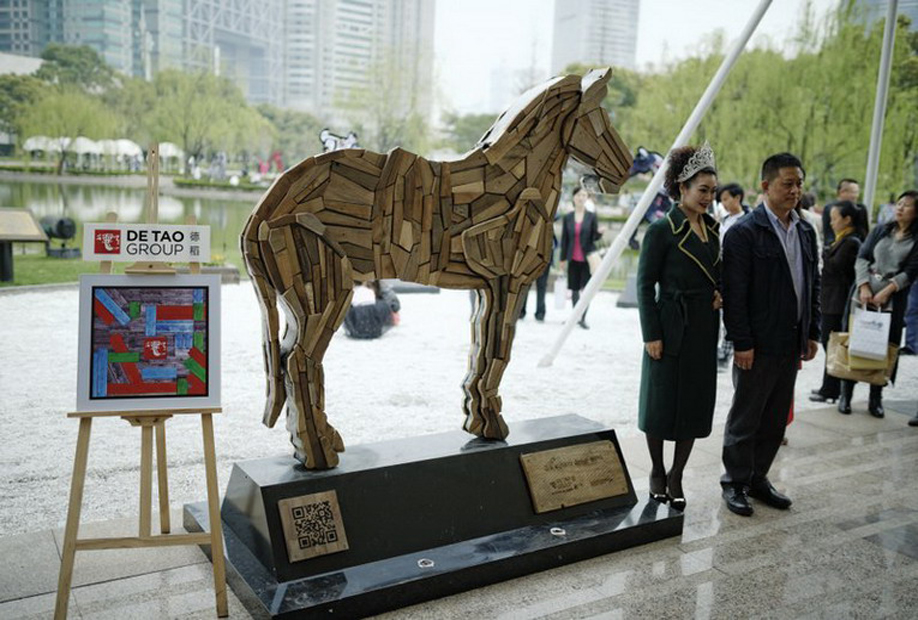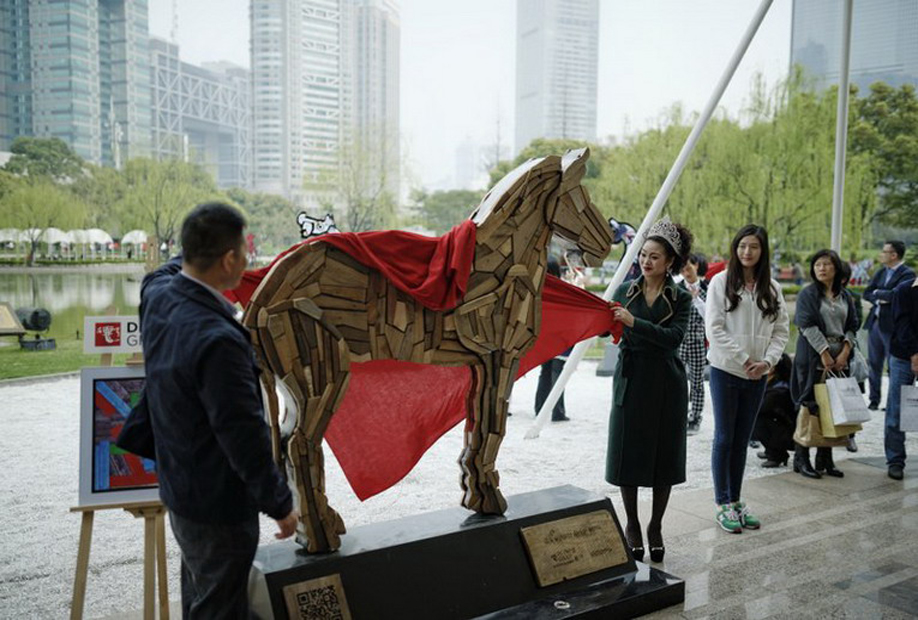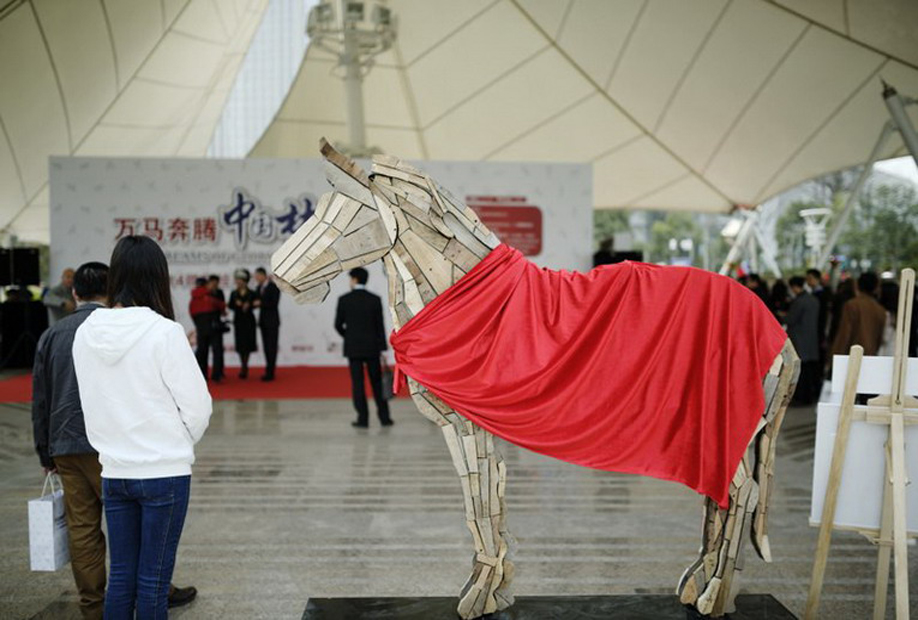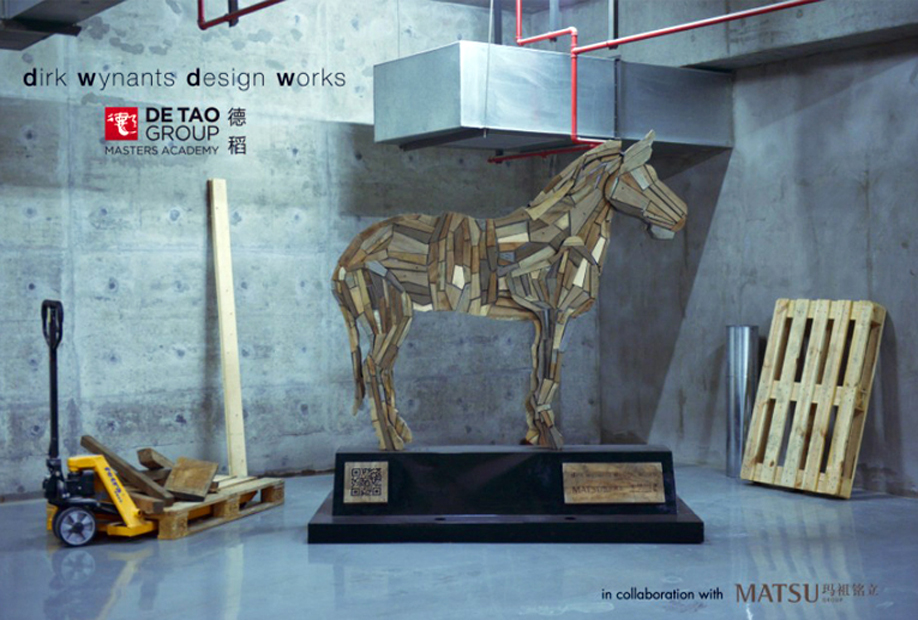2014 is known as "Jia Wu" in the Chinese calendar. "Jia" in celestial stems belongs to wood in Wu Xing, while "Wu" in earthly branches stands for Horse in Zodiac. Therefore, 2014 is the year of the horse while also carrying the elemental sign of wood. In the western world a wooden horse is easily connected with the famous, ancient story of the wooden Trojan horse and therefore is the inspiration to this work.
More than 1000 years BC the Greeks and the Trojans were at war. The Greeks misled the Trojans by putting a big wooden horse outside the city walls of Troy as a gift. The Trojans celebrated what they thought was their victory, and dragged the wooden horse into Troy. That night, after most of Troy was asleep the Greek warriors came out of the horse, and opened the city gates. The Greek army slaughtered the Trojans and the city of Troy was completely destroyed and would never recover again. The famous Troy civilization came to end.
The outside of the horse is made of slats of scrap wood. The inside of this wooden horse is made of steel and refers to today's industrialization. Just like the people of Troy did with their horse, our society embraces this industrialization to improve the quality of their life. But the consequences of embracing it, could be a deliberate threat to our civilization. Could this, just like the Trojan civilization got to their end, cause the extinction of our society?
This art piece symbolizes the hope we as designers have towards our society that it will take the necessary steps to prevent the further degradation of our environment which might lead to the end of life on this planet. If we take the horse in, we have to make sure nothing bad comes out.
The wood selected to construct our horse is waste material from wood manufacturers.
We cooperate with furniture brand Matsu, which provides us this scrap wood.
By using recycled materials we want to emphasize its paradox with the harmful mass consumption society.
We chose to work with the metal silhouette of the terracotta horse which was part of the Qin Dynasty. Both Troy and the Qin Dynasty mark an influential era, of which very few remains exist today.







 EN
EN





